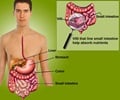Lower bone density is found in adults who are likely to have undiagnosed celiac disease, an autoimmune disease triggered by consuming gluten, reports

‘Optimal levels of supplementing nutrients for bone health are essential for people with undiagnosed celiac disease.
’
Read More..




Lara Sattgast and Drs. Margaret Slavin, Cara Frankenfeld, and Sina Gallo led the research. They found that adults with UCD had a lower bone density in their thighbones and femur necks the top of the femur and a most common site for hip fractures.Read More..
"Our findings suggest that lower bone density among adults with UCD is not a result of their diets, and in fact, they took in more calories and nutrients than the control group," Sattgast explains. "This may mean that these adults are not correctly absorbing nutrients."
The study used data from the National Health and Nutrition Examination Survey (NHANES) from 2009 to 2014, including its dietary component--What We Eat in America (WWEIA). In this study, data on more than 13,000 adults who were not pregnant or eating a gluten-free diet were used.
"The time to diagnosis for celiac disease has improved in recent years, but still typically takes several years between the first symptoms and diagnosis," Slavin explains. "If someone suspects that they may have celiac disease, it is important they see a doctor to both get the proper diagnosis and treatment and not self-initiate a gluten-free diet on their own."
This study provides further support for monitoring the bone health of individuals with celiac disease. The researchers suggest that future work should explore optimal levels for consuming and/or supplementing nutrients for bone health and whether poor absorption in the small intestine fully explains the differences observed in bone health or whether other metabolic pathways are impacted.
Advertisement













